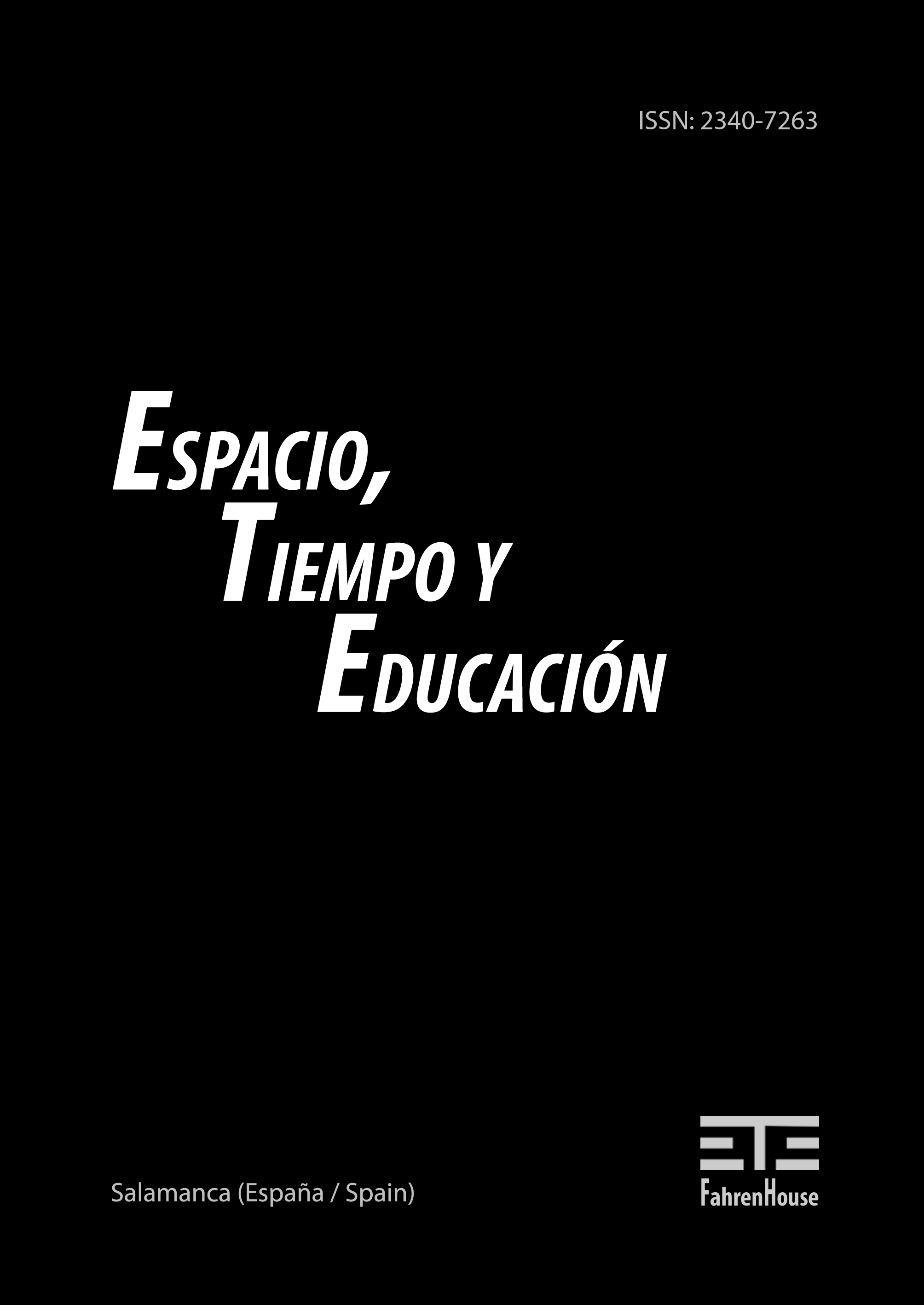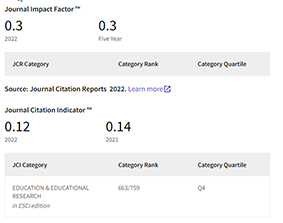The origin of teaching as a profession in Japan: A transnational analysis of the relationship between professionalism and nationalism in the 19th century
DOI:
https://doi.org/10.14516/3zx5sy55Palabras clave:
teaching in America, 19th century, Mori Arinori, professionalisation of teaching, teaching profession, teaching in JapanResumen
How was the concept of «teaching as a profession» advocated in the 19th century? In this study, this question is analysed by focusing on how the Japanese version of the concept was imported from the West and subsequently transformed in this non-Christian setting. It was formulated not only by a national action to create a strong centralized nation-state in Asia, but also through the transnational interaction of European, American, and Japanese educational leaders. First, the author argues that, the early Japanese concept of «teaching as a profession» is explored by examining the ideas of Mori Arinori, the first Minister of Education. Mori claimed that, in order to safeguard children’s morality, teaching should be a holy-calling profession in Japan. For him, this meant educating the subsequent generations to be obedient to their holy nation. Second, Mori’s images of education are shown to be consistent with those in the United States, where he had studied as a diplomat. These images were shared not only by US leaders such as Horace Mann, but also with Prussian and French leaders of the era. In both countries, both the holy-calling theory and the profession theory included nationalism, whose ultimate aim was education for the nation. However, while the sacredness of the republican polity was based on the ideals of individualism and liberty in the United States, the sacredness of the imperial polity in Japan was promoted by the Emperor the apotheosis of the imperial line, unbroken for ages eternal. These historical origins of the concept of teaching suggest why the professionalisation of teaching in Japan has been advanced by forces that hoist the flag of national particularism, and by a government that supports this view. This implies that teaching professionalism does not always connote democracy or the human rights of children/teachers.
Referencias
Barrau, T. (1879). Les directions morales pour les instituteurs. Paris, France: Librairie Hachette et Cie.
Bellah, R. (1992). The broken covenant: American civil religion in time of trial. Chicago: University of Chicago Press.
Bernard, R. M., & Vinovskis, M. A. (Spring 1977). The female school teacher in ante-bellum Massachusetts. Journal of Social History, 10(3), 332.
Carter, J. G. (1826). Essays upon popular education: Containing a particular examination of the schools of Massachusetts, and an outline of an institution for the education of teachers. Boston, MA: Bowles & Dearborn.
Clavin, P. (2005). Defining transnationalism. Contemporary European History, 14, 421–439.
Coontz, S. (2005). Marriage, a history - How love conquered marriage. New York, NY: Penguin Books.
Cousin, V. (1834). Report on the state of public instruction in Prussia; Addressed to the Count De Montalivet. (S. Austin, Trans.). London, UK: E. Wilson.
Dwight, H. E. (1829). Travels in the north of Germany, in the years 1825 and 1826. New York, NY: G. & C. & H. Carvill.
Evans, S. M. (1989). Born for liberty: A history of women in America. New York, NY: Free Press.
Fujimoto, N. (2001). Teacher as holy profession. In Contemporary encyclopedia on history of education (pp. 177-178), edited by Kubo, Y. et al. Tokyo, Japan: Tokyo-Shoseki. [in Japanese]
Hargreaves, A. (2000). Four ages of professionalism and professional learning. Teachers and Teaching, 6(2), 151-182.
Hasegawa, S. (2007). Mori Arinori and the creation of national subjects. Tokyo: Shibunkaku Shuppan. [in Japanese]
Imaizumi, T. (2003). Normal school dormitories in the period of Mori’s educational administration and their changes. Journal of Pedagogy, 38, 34-48. [in Japanese]
Japanese Society for the Study on Teacher Education (Ed.). (2017). Japanese teacher preparation policies; the record of the academic symposium on 2016. Tokyo: Gakubunsha. [in Japanese]
Japanese National Commission for UNESCO. (1960). Development of modern system of education in Japan. Tokyo: Institute for Democratic Education.
Kaestle, C. F. (1983). Pillars of the Republic; Common schools and American society, 1780-1860. New York, NY: Hill and Wang.
Kerber, L. K. (1980). Women of the Republic: Intellect and ideology in revolutionary America. Chapel Hill, NC: University of North Carolina Press.
Kohiyama, Rui. (1989). «Ryosai-Kenbo» and American concept of women. Nature, Human, Society: Journal of College of Economy, Kanto-Gakuin University, 10, 105-131. [in Japanese]
Kudomi, Yoshiyuki. (2008). Teachers’ professionality and identity: The international comparative survey and symposium in the educational reform era. Tokyo: Keiso Shobo. [in Japanese]
Lyon, M. (1837). General view of the principles and design of the Mount Holyoke Female Seminary. South Hadley, MA: Direction of the Trustees.
Massachusetts Board of Education. (1838). First annual report of the Board of Education together with the first annual report of the secretary of the board. Boston, MA: Dutton and Wentworth.
Massachusetts Board of Education. (1841). Fourth annual report of the Board of Education together with the fourth annual report of the secretary of the board. Boston, MA: Dutton and Wentworth.
Massachusetts Board of Education. (1846). Ninth annual report of the Board of Education together with the ninth annual report of the secretary of the board. Boston, MA: Dutton and Wentworth.
Massachusetts Board of Education. (1847). Tenth annual report of the Board of Education together with the tenth annual report of the secretary of the board. Boston, MA: Dutton and Wentworth.
Massachusetts Board of Education. (1848). Eleventh annual report. Boston, MA: Dutton and Wentworth.
Mori, A. (188-, repr. 1997). The complete works of Mori Arinori (2nd ed.), Vol. 2, edited by Kaminuma, H., & Inuzuka, T. Tokyo, Japan: Bunsendo Shoten. [in Japanese]
Mori. A. (1871). Life and resources in America. Washington, D. C.: Private printing.
Mount Holyoke College, Missionaries to Japan. (No date). Mount Holyoke College Archives and Special Collections.
Popkewitz, T. P. (2013). Rethinking the history of education: Transnational perspectives on its questions, methods, and knowledge. New York, NY: Palgrave Macmillan.
Quartararo, A. T. (1995). Women teachers and popular education in nineteenth-century France: Social values and corporate identity at the Normal School Institution. New Ark, DE: University of Delaware Press.
Sakuma, A. (2000). One genealogy of the establishment of teacher education in 19th century America – With a focus on the Troy Female Seminary of Emma Willard, Japan Society for the Study of Education, Educational Studies in Japan, 67(3), 333-343. [in Japanese]
Sedlak, M. W. (1989). Let us go and buy a school master: Historical perspectives on the hiring of teachers in the United States, 1750-1980. In D. Warren (Ed.), American teachers (pp. 257-290). New York, NY: McMillan.
Tanaka, S. (2005). The birth of the concept of character formation – A history of the concept of education in modern America. Tokyo: Toshindo. [in Japanese]
Terasaki, M. (1973). Introduction. In M. Terasaki (Ed.), The development of teachers’ image (pp. 9-31). Tokyo, Japan: Kokudo-Sha. [in Japanese]
Tyler Peabody Mann, M. (1937). Life of Horace Mann. Washington, D.C.: National Education Association of the United States.
Willard, E. (1819). A plan for improving female education (2nd ed.). Middlebury, VT: J. W. Copeland.
Woodbridge, W. C. (June 1831). Seminaries for teachers in Prussia. In American Annals of Education and Instruction, 1 (pp. 235-257). Boston: Allen & Ticknor.
Yamaguchi, K. (2014). About the concept of «Submission» in the educational thought of Pestalozzi, Research on the Education of Man: Bulletin of the Japan Society for the Study of Pestalozzi and Froebel, 26, 1-21.







